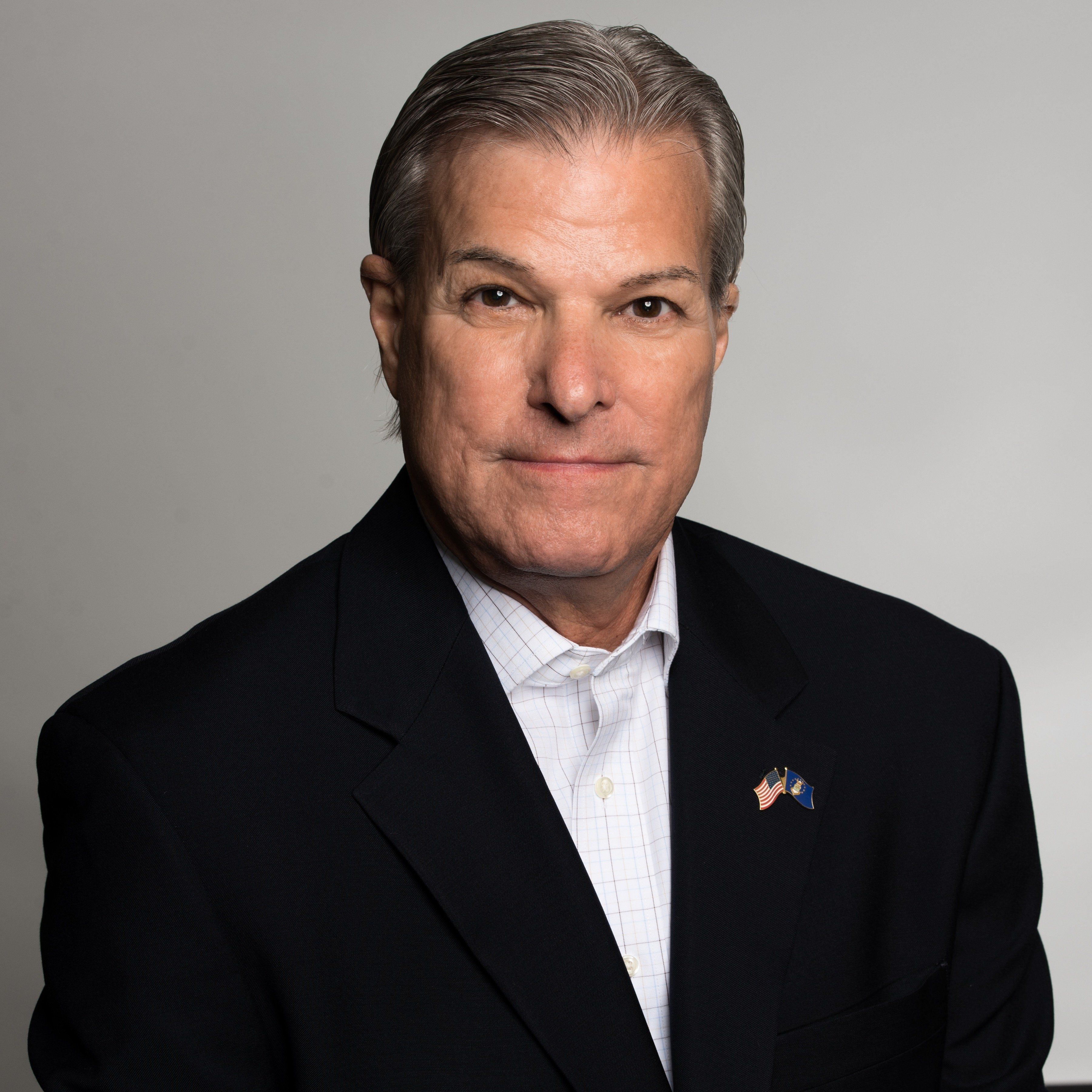Expansion of association health plans: 6 things to know about Trump’s proposal
Trump’s new proposal would broaden access to association health plans. Here’s six things to know.
President Trump’s new proposal, stemming from an executive order issued in October, would broaden access to association health plans (AHPs). Up to 11 million people could be eligible, according to the Department of Labor (DOL), which issued the proposed rule.
What are AHPs?
Trump has advocated for AHPs that enable small firms to come together at an association level and pool their employees as a group-with the aim of taking advantage of the additional value and reduced administrative expenses that larger-group plans offer, according to AHIP.

Wolfson
AHPs have been deployed in several forms for decades, principally within states, according to Jay Wolfson, DrPH, JD, distinguished service professor, public health, medicine and pharmacy, and senior associate dean, Morsani College of Medicine, University of South Florida Health.
“But their memberships were narrowly defined, the plans were poorly regulated and many were prone to insolvency due to lack of actuarial soundness. Those weaknesses have been addressed in this new, proposed rule which leverages the AHP concept as an explicit and aggressive federal policy. It is a part of the Administration’s deconstruction and dismemberment the ACA and the encouragement of market-based alternatives,” Wolfson says.

Friend
“This is a perfect example of how the new administration is disrupting the established order, moving from three old pillars to three new ones: mandates to choice, regulation to competition, and subsidies to actuarial soundness,” says David Friend, MD, chief transformation officer and managing director of BDO’s Center for Healthcare Excellence & Innovation. “Healthcare executives must be prepared to adapt to a world that is evolving.”
John Sarich, vice president of strategy at VUE Software, a firm that specializes in innovating and automating insurance business processes, agrees.
“The underlying aspect of this reordering of health insurance is to move away from employer plans and get it to a market-driven program,” Sarich says. “Historically, employer sponsorship of health insurance is a product of wage and price controls that were in effect during World War II, but your employer shouldn’t be the most important person in determining your healthcare. I think this last vestige of World War II should end once and for all.”
Analysts believe there are six things to know about the proposed rule:
- The new rule will push companies to become more competitive, “while offering consumers more freedom of choice to select the services they actually need instead of having to opt into a package of health services that may include some they don’t need,” says Friend. “For businesses dependent on regulation, subsidies or mandates in their current form for protection, this is a threat.”

Schindelman
Simeon Schindelman, CEO of Brighton Health Plan Solutions, shares a similar viewpoint. “Giving employers more buying power and the ability to purchase coverage together means healthcare providers will be incentivized to compete for business,” Schindelman says. “This competition would help introduce elements of market forces into healthcare, and lead to lower costs and higher quality of care-since providers will strive to attract more customers.”
2. It could open up the large group and self-insured markets to additional enrollees, “allowing sole proprietors and small employers to band together to purchase coverage, while reducing the number of individuals enrolled in the individual and small group markets. The goal of the proposed rule is to broaden access to AHPs, effectively making it easier for sole proprietors and small employers to have access to AHP coverage,” says Chris Sloan, senior manager, Avalere Health, an Inovalon Company. “This could then have potentially destabilizing impacts on the individual and, to a much lesser extent, small group markets. However, there are still structural barriers to AHPs that may limit the actual impact of this rule.”
Next: More choice, competition?
3. AHPs can play a role in decentralizing health insurance, as well as opening it up to more choice and more competition. “Indeed, between AHPs, health savings accounts [HSAs], and voluntary coverages along with the traditional group plans, there is an exciting opportunity to totally reshape health insurance,” Sarich says.
Sarich cites MediShare, a Christian-faith-based individual health plan.
“It is financially sound, follows the state and federal regulations, and is a very viable program for the individual/family,” explains Sarich. “Take this MediShare concept to a large-scale national program that incorporates features of accountable care, with the proposed CVS/Aetna merger in mind, and plans can and will be developed to serve a diverse group of individuals and businesses,” he says.

Sarich
The types of associations that could sponsor insurance plans is almost limitless, according to Sarich.
“There are national and regional trade associations for virtually every type of business category and social category imaginable,” he says. “Keep in mind that with AHPs there is no longer community rating, so plans will be priced based on their risk profile, which is very likely to be actuarially a lower cost than community rated plans.
“Then consider a health insurance marketplace built around health insurance exchanges,” Sarich continues. “These private exchanges would have dozens if not hundreds of plans that an individual or a broker/agent can peruse to find the plan that works best for the patient. Aon-Hewitt has built an exchange that conforms to the Obamacare requirements, and which functions well.”
Wolfson agrees that the definition of “association” will be broadened to permit unrelated professions and groups to join, and the rule opens the door to nationwide, single worker-class associations (e.g., lawyers or plumbers) that may be much less restricted by state regulations.
“Contrary to earlier concerns, this will not create an unbridled elimination of the individual market, though it does piggyback conveniently on the new tax law that erases the mandate of Obamacare,” Wolfson says. “The three most popular elements of the ACA will remain in place: no pre-existing conditions, no lifetime dollar limits on services, and plans must cover ‘children’ up to age 26. Under the rule, AHPs would not have to offer the palate of ‘essential benefits’ required by Obamacare and could permit highly segmented benefits that may not include certain higher cost services. There are credible concerns that expanded AHPs may dilute the individual market risk pools, resulting in higher premiums.”
4. It could raise risk pool concerns

Sloan
“While this rule provides additional flexibility to small businesses and sole proprietors, shifting enrollees out of the individual and small group market, may lead to further instability and risk pool concerns for those markets going forward,” Sloan says.
5. It will still require infrastructures to recruit and manage members, and third-party competenciesto establish care networks, negotiate and reimburse providers of care, and perform the myriad and essential administrative, fiscal, and compliance functions.
“For these, associations created under the new rules may turn to traditional financial services corporations that own and run insurance and managed care products to perform third-party administration [TPA] functions,” says Wolfson.
“In this respect, AHPs could take on an insurance brokerage role, with an eye toward optimization of both membership size and risk,” Wolfson says. “But larger associations may be able to become their own health benefit purveyors, competing, especially locally, for pricing and service deals with care providers. In this regard, large hospital/healthcare systems-even some academic health systems-will be encouraged to create AHPs, sculpting new, competitive landscapes and even opportunities for hybrid collaborations with the likes of entities such as the proposed CVS/Aetna fusion. But the devil will always be in the actuarial and membership details.”
6. It can potentially shift buying power.
AHPs will bring increased buying power to employers, according to Schindelman. “Not only will they be able to negotiate with traditional health plans from a position of greater strength, but, more important, AHPs will be well-positioned to work directly with healthcare providers,” he says. “It’s providers, not traditional health plans, that can best influence healthcare cost and quality."
Also, by working together, Schindelman believes that employers will learn things that are more difficult to learn independently. “For example, they’ll have more data about healthcare costs and quality that will be helpful when deciding which health plan to purchase and which providers to work with,” he says.
“Healthcare executives should be prepared to address questions pertaining to the potential value of association health plans and whether or not the new rule will create or hinder value-driven solutions for their clients,” Schindelman says.
Best case scenario, the proposal could lower costs for small businesses and open up coverage to more individuals. Worst case, it could drive up costs for those who most need insurance, or create financial distress when an unexpected health crisis occurs. The DOL’s notice of proposed rule making was published in the Federal Register on Jan. 5, 2018, and is available for public comment for 60 days.
Extending the Capabilities of the EHR Through Automation
August 2nd 2023Welcome back to another episode of "Tuning In to the C-Suite," where Briana Contreras, an editor of Managed Healthcare Executive, had the pleasure of chatting with Cindy Gaines, chief clinical transformation officer at Lumeon.
Listen